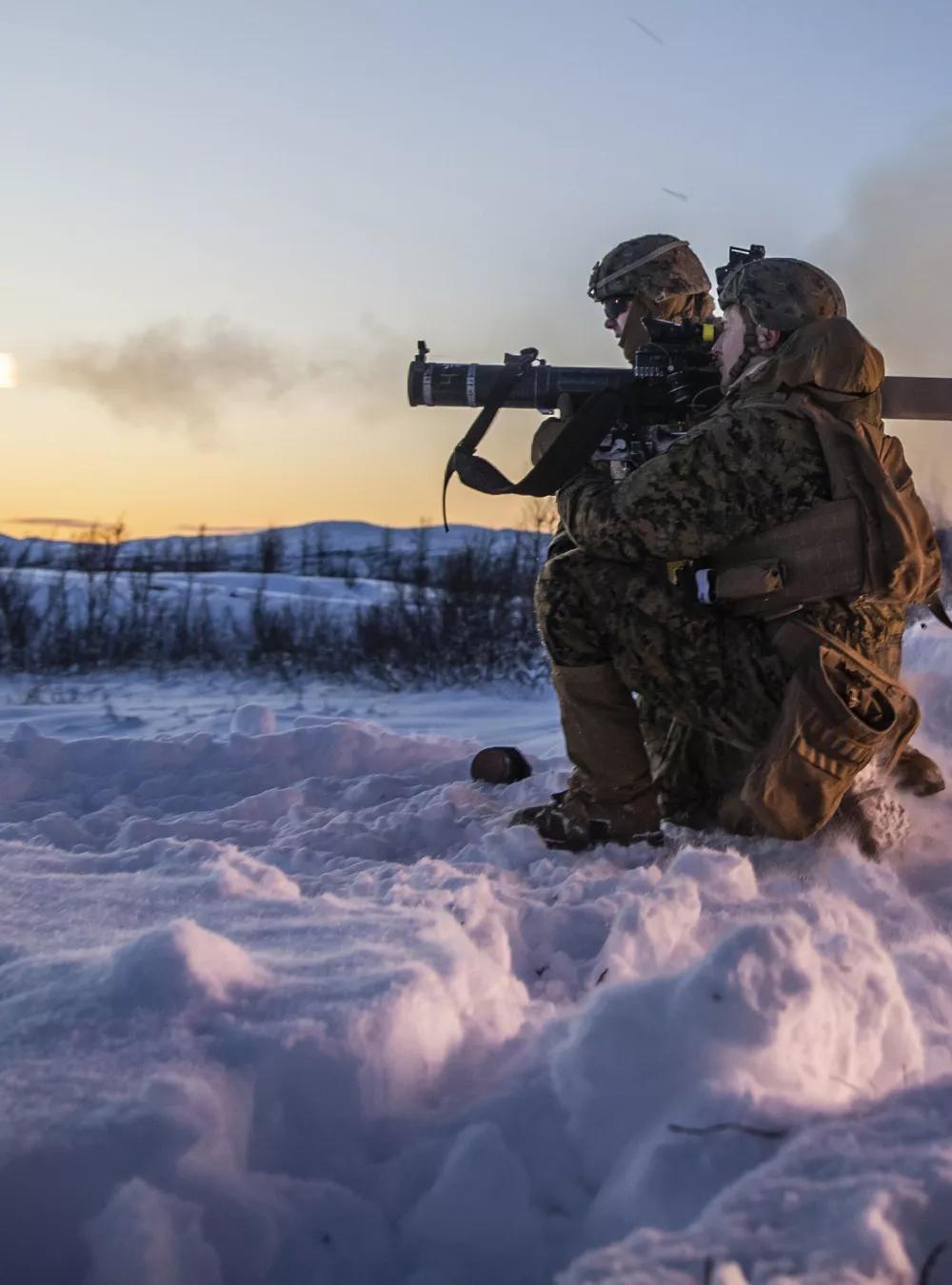MITRE partnered with industry to power U.S. warfighting—from boots on the ground to base camps—in one of the toughest operating areas in the world.

Cutting-Edge Energy and Power Solutions for U.S. Arctic Missions
American warfighters operate under some extreme conditions. Consider the glacier Arctic, where temperatures can drop below -60F degrees. In this remote region, U.S. Northern Command (NORTHCOM) and the North American Aerospace Defense Command (NORAD) conduct missions vital to U.S. national sovereignty and security.
But what happens to military equipment and supplies at those ultra-frigid temperatures? Fuel and hydraulic lines freeze, battery life gets sapped, and generators and heaters run continuously—making power supply and distribution a massive challenge.
That’s why MITRE collaborated with U.S. military and industry partners to create high-performance systems to supply resilient energy in the most-severe cold. In the works since 2022, four novel technologies are now undergoing final prototyping, which will support a transition to fielded operational units.
“As they cover the spectrum of military energy requirements in the Arctic, these systems will enable the U.S. to counter threats and reduce risk to combatant command operations,” says Jeth Fogg, NORAD and NORTHCOM’s senior technical advisor in the Logistics and Engineering Directorate.
"Working with MITRE allowed us to better understand and build to warfighter requirements—saving time and costs and accelerating the deployment of our technology."
Eric Rountree, CEO of FastLion Energy
Resilient, Scalable, Cybersecure Solutions
As the not-for-profit operator of the federally funded R&D center for national security, MITRE serves our government sponsors without product quota or equity stake. With over six decades’ experience in the defense space, along with deep cross-disciplinary expertise, we collaborate with industry to better align innovations to mission requirements. The result: capabilities transition more seamlessly from the lab to the field.
“Working with MITRE allowed us to better understand and build to warfighter requirements—saving time and costs and accelerating the deployment of our technology,” says Eric Rountree, CEO of FastLion Energy, the small-business partner for several capabilities and one of numerous commercial partners.
Beyond serving missions of the U.S. armed forces in the polar latitudes, the solutions carry global impact.
“As our nation’s adversaries advance at unprecedented pace in competing for energy resources, we need to stay ahead of them,” says Ariel Castillo, MITRE’s chief engineer for advanced energy. “These capabilities will be vital in the race for operational energy resilience in the Arctic.”
Front-runners in that race: four collaborative projects that support our nation’s quest to attain Arctic energy dominance and resilience. Demonstrated as effective to -60F degrees, these capabilities will help reduce generator fuel resupply risk and meet high-energy demands for the northerly region. They include:
- Arctic Grid Energy Storage (AGES): A scalable, secure operational energy microgrid that combines power generation, storage, and distribution to provide a baseline infrastructure capability for critical applications including radar stations, communication nodes, and base camps.
- Arctic Energy and Power Technology Landscape (ATLAS): A data-driven modeling and simulation tool that evaluates energy and power technology options—wind, solar, nuclear—for extreme cold weather. ATLAS can inform U.S. investment decisions for technology development and optimize operational energy planning.
- Reliable Rapid Arctic Lithium-ion Energy (RRALiE): On-demand electrical power for vehicles and microgrids using Lithium-ion batteries with unprecedented cold-start and fast-start/charging capabilities. Warfighters won’t need to idle engines in frigid temps, dramatically reducing fuel.
- Lithium-ion Reliable in the Arctic (LiRA): Like RRALiE, these smaller arctic-capable batteries provide power to soldiers operating on foot.
Bridging the Gap Between Requirements and Deployment
The RRALiE and LiRA projects continue their extreme cold weather and lab testing at Army’s Cold Regions Research and Engineering Lab. Looking ahead, the MITRE team is aiming to validate the readiness of AGES, RRALiE, and LiRA during NORTHCOM’s Arctic Edge 2026, a joint-service, multinational field training exercise in Alaska.
Beyond getting the capabilities into warfighters’ hands, Castillo is looking forward to exploring potential applications with Allied and other international partners. This work will serve as a baseline for future complementary technologies: “Things like micronuclear reactors are a definite interest for Arctic operations.”
Other U.S. government partners participating in the Arctic energy projects include:
- Office of the Deputy Assistant Secretary of War for Energy Resilience and Optimization, Operational Energy – Innovation
- The Army Cold Regions Research and Engineering Laboratory
- The Defense Innovation Unit
- The Army Combat Capabilities Development Command, Control, Computers, Communication, Cyber, Intelligence, Surveillance, and Reconnaissance
- The Army Project Manager Expeditionary Energy and Sustainment Systems